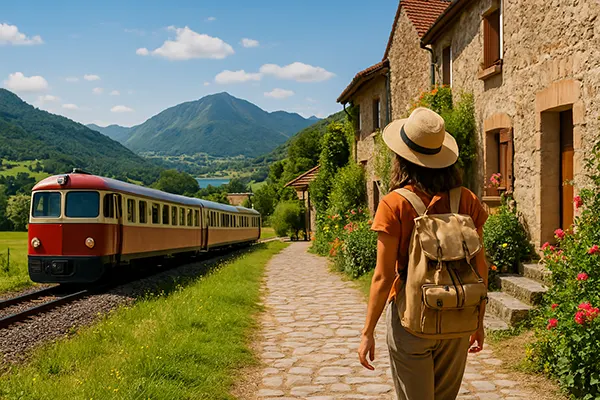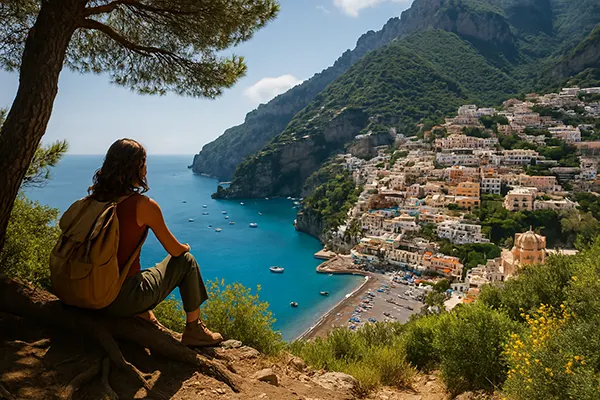
The Art of Slow Travel: How to Enjoy Every Moment
Slow travel is more than just a trend – it is a lifestyle that invites people to rediscover the world at a human pace. In an era dominated by rush and efficiency, taking things slow can offer deeper experiences, meaningful connections and a renewed sense of mindfulness. This concept has gained strong momentum by early 2025, especially among travellers seeking authenticity over checklist tourism.
The Philosophy Behind Slow Travel
At its core, slow travel encourages quality over quantity. It rejects the traditional notion of ticking off attractions and instead promotes fully immersing oneself in a destination. The philosophy is simple: travel less, stay longer, and experience more. Whether you’re exploring rural France or the coast of Portugal, the emphasis is on forging emotional and cultural connections with places and people.
Slow travellers often prefer local guesthouses, farm stays, or small boutique hotels instead of international chains. They take the time to learn a few local phrases, shop at village markets, and discover the rhythm of daily life in unfamiliar surroundings. This way of travelling respects local traditions and supports sustainable tourism by distributing wealth more evenly across communities.
Environmental awareness also plays a crucial role. By choosing trains over planes or bikes over taxis, slow travellers reduce their carbon footprint. This makes the journey as important as the destination – scenic train rides, countryside hikes or even long walks through old towns become part of the travel experience itself.
How Slow Travel Shapes Your Perspective
One of the most powerful aspects of slow travel is how it alters your view of the world. Without the pressure to rush from place to place, travellers often find themselves paying more attention to their surroundings. Conversations with locals become more meaningful, meals more memorable, and small details more significant.
It fosters patience and adaptability, teaching you to embrace delays or unexpected detours as part of the experience. Whether it’s a missed bus or a rainy day, these moments can lead to spontaneous encounters or surprising discoveries that wouldn’t happen in a rigid itinerary.
Slow travel also offers a kind of personal transformation. Many who adopt this approach report feeling more grounded and less stressed, even long after returning home. They develop a deeper appreciation for simplicity, beauty in ordinary things, and the joy of being present.
Practical Tips for Embracing Slow Travel
Adopting a slow travel mindset doesn’t necessarily require a sabbatical or large budget. Anyone can integrate its principles by shifting how they approach a trip. The first step is to choose fewer destinations and allocate more time to each. Instead of visiting five cities in a week, consider spending a full week in one town to explore it thoroughly.
Travelling during off-peak seasons is another way to enhance the experience. You’ll avoid the crowds, lower your expenses, and see places more authentically. It also gives you a chance to engage with locals who are not overwhelmed by tourists and more willing to share their culture.
Planning less and allowing for spontaneity can be liberating. While a loose structure is helpful, leaving room for unplanned activities creates the space for surprise and serendipity – two elements that make slow travel truly special.
Choosing the Right Destinations
Not all places are ideal for slow travel, so choosing the right destination is essential. Smaller towns, countryside regions, or areas known for cultural depth and natural beauty often work best. For instance, Slovenia, the Scottish Highlands, or the Italian region of Puglia are perfect for taking it slow.
Destinations with reliable public transport or walkable infrastructure are especially beneficial. This allows travellers to explore without depending on rental cars or domestic flights. It also encourages interaction with locals and contributes to a more relaxed rhythm.
Safety and connectivity also matter – stable internet, welcoming communities, and access to basic amenities provide peace of mind, particularly for those who wish to combine travel with remote work or longer stays.

The Mental and Emotional Benefits of Slowing Down
Slow travel has a profound effect on mental well-being. It reduces anxiety associated with tight schedules and constant movement. Instead, it encourages mindfulness – being truly present in a moment without worrying about the next destination or social media check-in.
People often report increased happiness from slow travel. By engaging more with locals, learning about new cultures deeply, and avoiding tourist traps, they build more meaningful memories. This kind of travel turns a trip into a personal story, rather than a social media highlight reel.
Moreover, slow travel allows for emotional rest. Travelling can be exhausting when over-packed with activities. Taking time to simply sit at a café, watch the locals, or read in a park offers mental clarity that’s rare in modern life. These pauses are where some of the richest reflections occur.
Integrating Slow Travel into Daily Life
You don’t need to be abroad to embrace the slow travel mindset. Weekend getaways close to home or exploring unfamiliar neighbourhoods on foot can offer the same sense of discovery and joy. It’s about paying attention and being curious – two habits that improve everyday life.
Journaling your experiences, trying local cuisines, or attending small cultural events can help extend the travel spirit into your routine. It nurtures a mindset that values presence, appreciation, and intention – qualities often overlooked in daily routines.
Ultimately, slow travel is less about how far you go and more about how deeply you engage. By bringing that awareness into everyday experiences, you can cultivate a sense of adventure and gratitude wherever you are.
